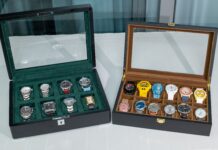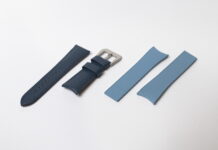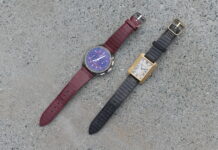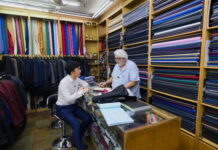Hello everyone, and welcome to another of my reviews. In this article, I’ll be reviewing the Ettore from Hong Kong watch microbrand Atowak.

Atowak is known for its avant-garde designs, with the brand first gaining mainstream popularity with the Ettore, which even got a feature on Watchfinder. Since then, they have released a Urwerk-esque Cobra – which also got a feature on Watchfinder – cementing themselves as one of the foremost options when it comes to affordable haute horology. Atowak kindly sent over the Ettore for me to review, so let’s see if it’s any good.
Atowak – the Brand
Atowak describes itself as “an up-and-coming Hong-Kong-based watchmaker creating unique timepieces that echo the aesthetics of Swiss luxury independents, at reasonable price points”. Its roots can be traced back to 2010, when it started as a watch manufacturer helping other microbrands fulfil their designs.
That changed in 2020, when Atowak decided to start designing their own watches. The inaugural release was the Ettore, a 4-arm wandering hour timepiece that cost just US$550 on Kickstarter. That campaign garnered the support of almost 500 people, and provided Atowak with the popular backing needed to churn out more designs.
Without further ado, let’s take a closer look at the watch that started it all.
Atowak Ettore – Video Review
If you’re interested in seeing hands-on footage of the products, do watch my Youtube review of the Atowak Ettore below:
Atowak Ettore – Build Quality
I would say that the specifications of the Atowak Ettore are decent for its price.
Firstly, the Atowak Ettore uses a sapphire crystal. As aforementioned numerous times in my previous reviews, I’m a huge advocate of sapphire crystal due to its inherent scratch-resisting properties. Personally, I always look for sapphire crystal in my modern watches as it adds greatly to the durability of the watch. Unfortunately, the Ettore has a paltry water resistance rating of just 30M – definitely avoid water as much as possible.
Although heavily redesigned to support the wandering hour complication – more on that later – the base movement powering the Ettore is the Miyota 9015. A more affordable alternative to the ETA 2824, it beats at the same 4Hz frequency as its Swiss counterpart, which translates to a smoother sweep of the second hand. If you would like to know more about the movement, A Blog to Watch did an in-depth article about the Miyota 9000 series here. It usually has around 42 hours of power reserve, but Atowak advertises the Ettore’s power reserve at only 36 hours – I assume the wandering hour complication is more energy-consuming to power than the usual time-only timepiece. Ordinarily, I would have said that a Miyota 9015 movement is a tad underwhelming for a ~S$1500 watch, but that would be to ignore the obvious cost that went into the wandering hour complication. In any case, a simple time-only Kurono also utilises the Miyota 9000 movement, despite being near twice the ticket price.
However, I was left disappointed by the quality of the strap, which was sub-par for a 4-figure watch. The leather upper feels stiff and artificial – probably mere genuine leather – while the lining feels cardboard-like. It’s a strap that I would expect on perhaps a S$200-300 watch, not one of this price range. Still, it is a rather simple fix, and at least there are quick-release spring bars.
However, I do like the usage of Swiss Superluminova C3 on the case of the watch, as well as the hands and the numerals. It’s an interesting aesthetic, and further reinforces the spaceship-esque design. It’s rather bright in the dark too, which should mean that multiple layers of Superluminova were used.
All in all, the Atowak Ettore possesses solid build quality for its price. I don’t really have many complaints, except for the cheap strap – though that can easily be remedied by a third-party option.
Atowak Ettore – Design
Of course, the main draw of the Atowak Ettore is in its avant-garde wandering hour design.
For the uninitiated, a wandering hour complication displays time through an arm showing the hour, which moves across an arc showing the minutes. For example, the time would be roughly 2.57pm in the photo above. It’s a complication popularised by the independent horology darling Urwerk, although the roots of the wandering hour can be traced all the way back to the 17th century. It’s certainly one of the most striking complications horology has to offer – it’s one that would make even those who aren’t watch enthusiasts take a second look.
In addition to the striking wandering hour complication, the dial also features Geneva striping – an unconventional aesthetic feature, one that reminds me of watches like the Glashutte Original Panomatic Inverse. It adds texture to the dial, as well as visual interest. Its sheen also plays nicely in the light, and reinforces the fashion-forward nature of the watch.
And as if all that wasn’t unconventional enough, Atowak decided to use a disc-like case for the Ettore. It reminds me of a UFO, and once again enhances the futuristic nature of the watch. It’s certainly a unique case shape, one that not only attracts attention, but also sets it apart from its Urwerk inspiration. I’m not sure if it’s intentional, but the “Atowak” branded metal segment of the case reminds me of a movement rotor. There’s textural juxtaposition present too – the “rotor” part of the case is satin brushed, while the edges are polished to a gleam. Lastly, the crown is also positioned on the left (just in case there weren’t enough differentiating factors), making it a viable “destro” watch.
Although its 46.5mm diameter may sound large on paper, it actually wears small on the wrist due to the short 40.5mm lug-to-lug length. It’s not a small watch by any means, but it’s definitely not a SevenFriday. And at 13mm, it’s still slim enough to slide under a shirt cuff.
Overall, it’s clear that the unique selling point of the Ettore is its eye-catching design. With a wandering hour complication, Geneva striping on the dial, a disc-like case with contrasting textures, and even a left-hand crown, the Ettore is meant to turn heads. And from my personal experience, it definitely succeeds in that regard.
Shootout: Atowak Ettore vs DWISS RW1
Another affordable wandering hour microbrand watch is the DWISS RW1, which I actually covered when it first launched on Kickstarter.
In terms of specifications, the DWISS RW1 beats out the Atowak Ettore. The former uses an Elabore Grade ETA 2824 movement and boasts 200M of water resistance – enough to swim with. It even comes on an Italian leather strap. In contrast, the Atowak Ettore uses a comparatively pedestrian Miyota 9015 movement, has a paltry 30M of water resistance, and has a cheap leather strap.
From an aesthetic standpoint, the fight is much closer. Both dials feature a striped texture, and of course the wandering hour complication. However, I would say that the looks of the Ettore come across as more unique due to the asymmetrical case, as well as the “hidden” nature of the wandering hour arms. Of the two, the Ettore is definitely the more eye-catching timepiece. That being said, I also have to give props to the multi-layered case of the RW1, which is a piece of magnificent engineering.
Where the Atowak Ettore trumps the DWISS RW1 is in its price. At just under S$1500, the Ettore is less than half the price of its Swiss-Made counterpart, despite having the same complication. If having a Swiss movement and high water resistance is essential, then the DWISS RW1 would be the better choice. Otherwise, save the money and opt for the Ettore instead.
Conclusion – is the Atowak Ettore “shiok” or not?
The Atowak Ettore is one of the most impressive watches I’ve handled at the sub-S$1500 price point. Not only is it one of the most affordable wandering hour timepieces on the market, but it also possesses several intriguing aesthetic touches – the striped dial, asymmetric case, and left-sided crown – that complete the entire package nicely. And as the icing on the cake, it’s also restrained in its dimensions, resulting in a surprisingly wearable timepiece.
Those interested in purchasing the watch can use the promo code “WAHSOSHIOK” to enjoy 15% off Atowak’s watches from their web-store. After the discount, the Atowak Ettore can be had for just US$1104/S$1476 (after the promo code below), making it one of the most affordable wandering hour watches in the market.
View the Atowak Ettore here.
View the full range of Atowak watches here.
Specifications:
Model: Ettore Drift
Style: Sport / Casual
Case Size: 46.5mm*40.5mm
Case Thickness: 13mm
Weight: 92 grams
Case Material: 316L Stainless Steel
Dial: 3D Copper & Aviation Aluminum & Swiss LumiNova Printed
Lens: Scratch-resistant Sapphire Crystal
Water Resistance: 3ATM
Movement: Redesigned Japanese MIYOTA 9015
Power Reserve: 36 hours
Hands: Retrograde Style Reading
Strap Material: Leather
Strap Width: 24mm*20mm
Strap Length: 120mm*80mm
Clasp Type: Buckle
Warranty: 2 Years
P.S: Check out The Shiok Store here – it serves as a curation of my favourite products from my favourite brands.
P.P.S: Do check out the new “Discounts!” page for exclusive discounts for Wah so Shiok readers! More brands will be added very soon – stay tuned!
P.P.P.S: If you haven’t already, do follow my social media channels on Facebook here, on Instagram here, and on Youtube here.
P.P.P.P.S Shiok is a common word Singaporeans use to express admiration or approval. As of 2016, you can find the definition of the word in the Oxford English Dictionary.










































